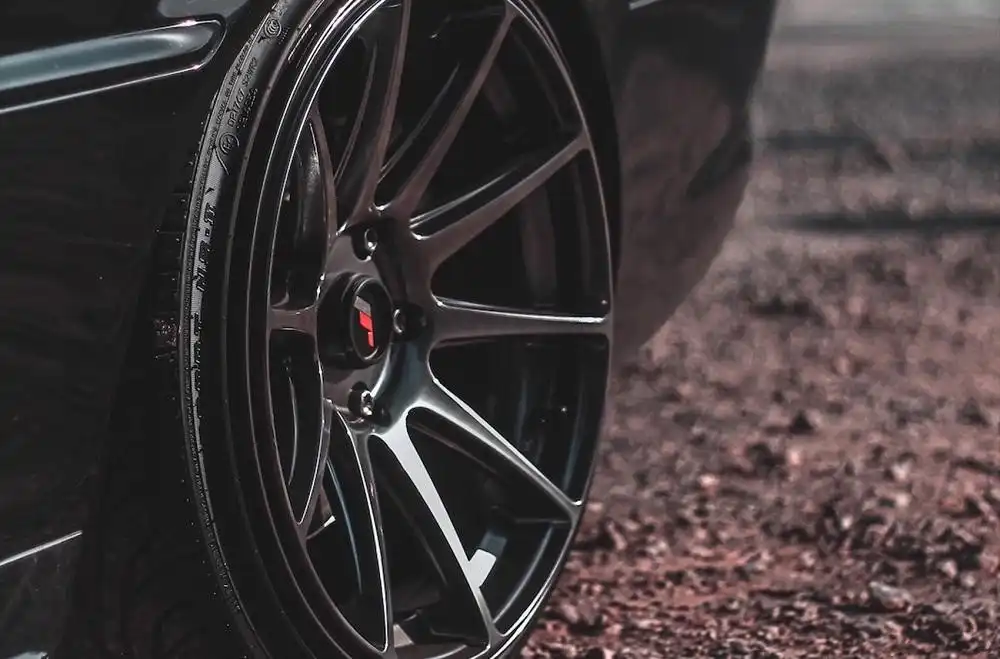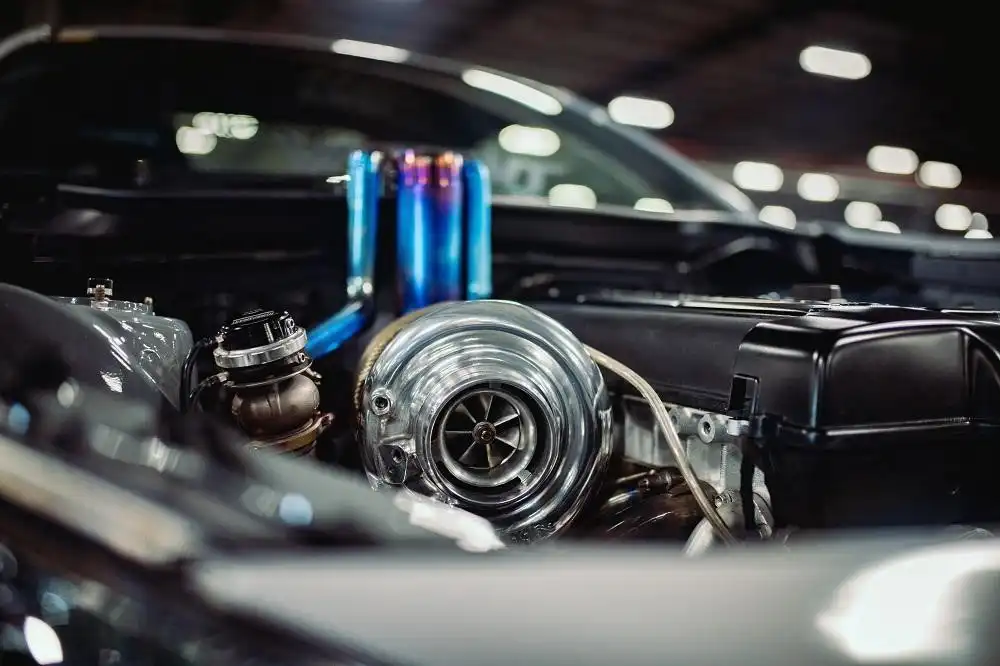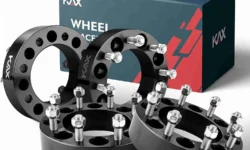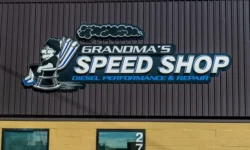5 Types of Mods for a Faster Car
If you’re looking to squeeze out the last drops of available power from an engine, several modifications will allow you to do so. Adding engine parts for more performance is done in stages, with the exhausts usually the first additions and engine internals like pistons and cranks left for last. In between, there are several options depending on the type of engine and the displacement.
Considering the range of aftermarket performance parts, making modifications won’t put a significant dent in your savings. You can start with the basics and build up from there.
Table of Contents
Exhausts

Engines need to breathe. And aftermarket exhausts, besides an uprated air intake system, are the performance parts that get that done. They remove the inbuilt restrictions of stock systems. Narrower tubing in thinner materials creates backstops to the optimal gas flow of expended gases.
All engines create backpressure throughout the exhaust tubing, and some are necessary to turn turbines. Too much, though, will effectively choke the engine of needed air for the next combustion cycle. This results in a loss of power. Wider and straighter tubing made of materials that better handle the increases in heat and pressure gets the exhaust gases out faster. And this is the recipe for better performance.
Owners can change out separate parts in the exhaust system, often starting with the exhaust manifold and downpipes and going for uprated catalytic converters to smooth out gas flow, and remove more toxic gases. Different mufflers, in turn, are used to fine-tune exhaust sound profiles. You can get a deep and rumbling burble or a muffler and resonator combo to drone out any sound. There are also different exhaust configurations, largely dependent on the number of cylinders and whether or not there is forced induction involved.
Basic units are axle-back exhausts tuned for deeper sounds and better looks to the tailpipes. DPF or cat-back exhausts are the next rung, widening the mid-section and adding a few horses, whereas complete custom header and turbo-back systems remove all parts of the stock exhaust and are the ones to get for the best performance upgrades. A well-tuned exhaust can bring a 5 to 10 per cent increase in overall power over factory figures.
Better Wheels

Lighter is always better when going for more speed. But not at the expense of durability. Aftermarket wheels shed some weight over what you already have, and improve handling characteristics. There’s more traction, a more refined response in turns and braking, and enhanced stability. In addition, superior materials and production processes, like flow-forming and forging, increase strength. Wheels will perform better when hitting potholes or bumps and still sustain rolling speed.
Cast aluminium wheels are the cheapest wheel upgrades from stock, while multipiece wheels are at the other end of the performance and pricing scale. A decent option is going the forged route, either in aluminium or magnesium, and the sizes and widths accommodate lower-profile tyres with more grip.
Bigger wheels aren’t necessarily better, but they provide improved looks with less gaping in the wheel arches. This gives cars a nice lowered appearance, especially when paired with the next option on our list of upgrades.
Suspension Upgrades

Changes to the wheels are often done with changes to the stock suspension parts and linkages. The aim is to firm up the ride, with the vehicle sitting lower and reducing the centre of gravity, so handling is more responsive. With the car lower, there’s less drag and improved aerodynamics.
There’s a whole host of mods here. Most car owners looking for better handling will get rid of stock springs and shocks and go for pre-assembled coilovers. Monotube coilovers are better for stiffening up the ride, especially when cornering. These allow for height adjustments, as well as compression and rebound adjustment, basically dialling in the way the car reacts to road imperfections. Modified springs with a progressive spring rate are what to look at if the car is solely for track use. For mixed street and track use, you can get either stiffer dual-tube coilovers with less travel or monotubes with linear springs.
A newer alternative to coilovers is air suspension. This consists of air bellows or bags inflated to the recommended pressure. Air suspension setups too can lower but also lift the car without affecting handling. Adjustability is crucial here. The benefit is that you can have both the ride comfort of plusher suspension settings, with air bellows absorbing any nasties in the road, but also stiffen the suspension with increased air pressure if handling is a priority. That’s why they feature newer performance and luxury cars, either as standard or optional kits.
Additional parts better handle vehicle sway, with upper and lower control arms and sway bars helping out. Braces and roll cages are an option for stripped sown down.
Body Styling
Body styling can improve looks, lower weight, and enhance the airflow above, around, and under the car. The aim is to get more downforce and grip to the wheels and tyres. Front splitters, for instance, disperse incoming air above the car to increase the air pressure and press it downward. Spoilers at the front send air to the sides, aiding stability. Side skirts sitting lower prevent air from gathering under the vehicle. Diffusers at the back rid excess air and rear spoilers make the best of higher speeds to, again, increase the downforce. You’ll see adjustable spoilers in sports cars that lift and lower as the speed increases.
A car fitted with the whole package looks good too. Designs have purpose and visual appeal. Look for exterior body performance parts made of lighter materials than stock bodywork. Polyurethane body parts are durable but still have some flex. Fibreglass is easier to work with in terms of finishing and paints. But the best looks and performance are from ultra-light carbon-fibre additions that exhibit the highest strength and lowest weight.

Engine Upgrades
This is where things start to get interesting, technical, a bit complex, and somewhat more expensive. I mentioned that performance upgrades are done in stages. Exhausts and intakes are in stage 1, setting the foundation for power add-ons in stages 2 and 3.
Stage 2 involves toying with cam profiles for better timing, installing high-flow fuel injectors and fuel pumps to make the best out of the improved airflow, porting and polishing cylinder heads to remove restriction and imperfections, and installing a lighter flywheel for quicker revving. Here there are also changes to engines with a fitted turbo. This includes the change to bigger intercoolers to handle more heat, and wastegates to remove excess pressure. Piping to the turbine will be uprated for both pressure and heat increases.
Stage 3 often goes deeper. Here you’ll be thinking about getting forged pistons, connecting rods, and cranks. The bigger bangs required for more bhp means these car parts will come under more strain, and the cast steel parts that come stock just won’t cope. You’ll see seized pistons, bent or snapped conrods, and cranks that can break in two.
Swapping out the pistons also means swapping out the connecting rods, and adding performance bearings to reduce friction. Cranks can go through heat treatment to resist bending and twisting in each stroke cycle as well as high-tech machining to reduce weight and ensure that they perform.
Different conrod and piston combos are sold for different engines, with the science already done for you, and these are paired to modified cranks that best handle the increases in engine speeds and additional power on tap. Lastly, to get that power down to the wheels, mods are done to the transmission, with changes to gear ratios, and the inclusion of limited slip differentials the more popular choices.
Now that you have horsepower and torque figures right where you want them, along with a better-looking and better-sounding car, time to get those laps under your belt. Get what you’ve put in the time, patience, and money to reflect your results on the track. Don’t be that slow driver with the fast car, outpaced by someone more adept and driving your gran’s hatch.




